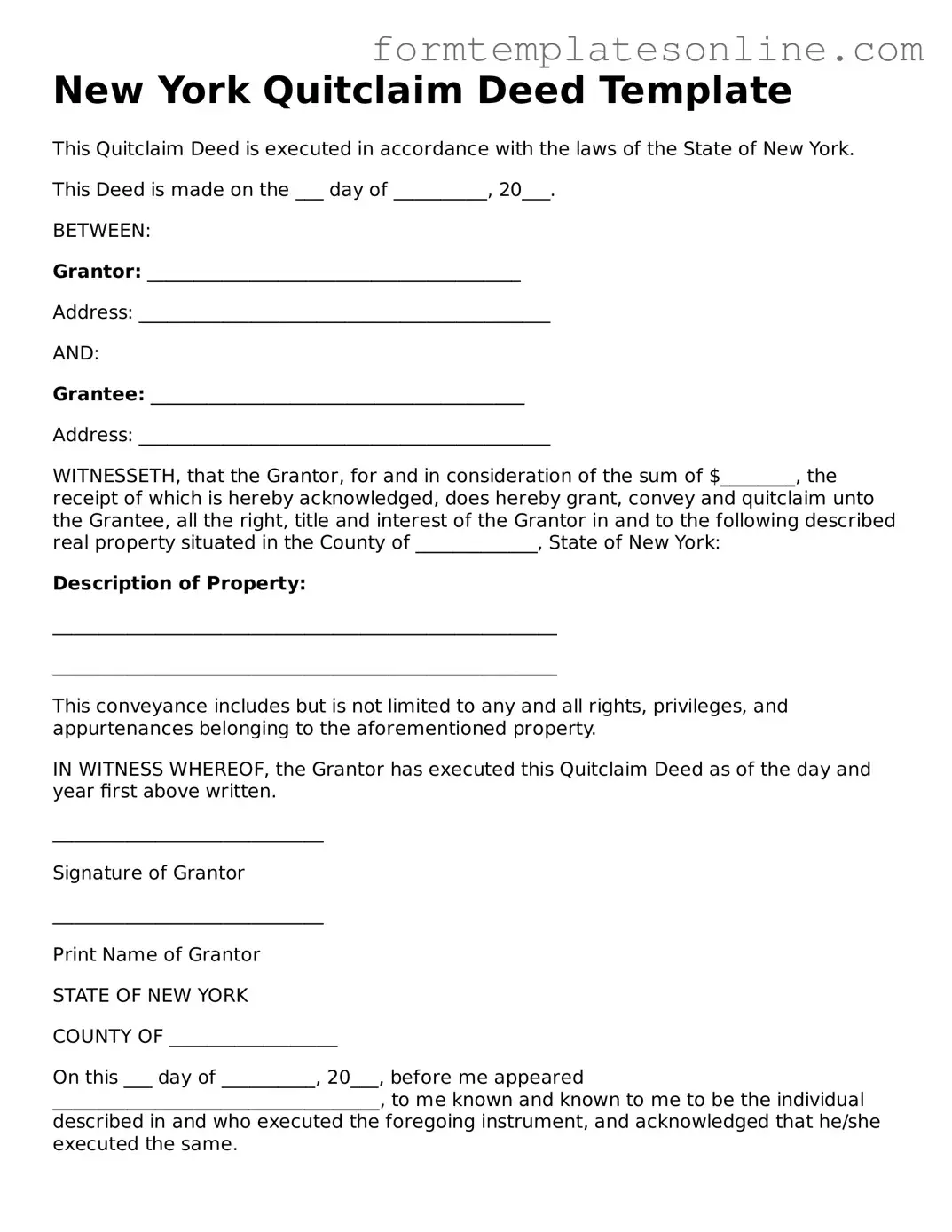New York Quitclaim Deed Template
This Quitclaim Deed is executed in accordance with the laws of the State of New York.
This Deed is made on the ___ day of __________, 20___.
BETWEEN:
Grantor: ________________________________________
Address: ____________________________________________
AND:
Grantee: ________________________________________
Address: ____________________________________________
WITNESSETH, that the Grantor, for and in consideration of the sum of $________, the receipt of which is hereby acknowledged, does hereby grant, convey and quitclaim unto the Grantee, all the right, title and interest of the Grantor in and to the following described real property situated in the County of _____________, State of New York:
Description of Property:
______________________________________________________
______________________________________________________
This conveyance includes but is not limited to any and all rights, privileges, and appurtenances belonging to the aforementioned property.
IN WITNESS WHEREOF, the Grantor has executed this Quitclaim Deed as of the day and year first above written.
_____________________________
Signature of Grantor
_____________________________
Print Name of Grantor
STATE OF NEW YORK
COUNTY OF __________________
On this ___ day of __________, 20___, before me appeared ___________________________________, to me known and known to me to be the individual described in and who executed the foregoing instrument, and acknowledged that he/she executed the same.
_____________________________
Notary Public
